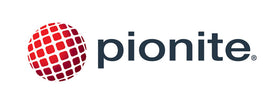Edgebanding in Denver, CO
Welcome to Denver, Colorado
The Mile High City nestled at the base of the Rocky Mountains, known for its outdoor recreation, cultural attractions, and thriving business community. In the heart of the American West, Denver's industrial landscape includes a robust manufacturing and design sector, with edgebanding serving as a crucial process in furniture manufacturing, interior design, and architectural construction. Let's explore how edgebanding enriches Denver's industrial fabric and fosters creative innovation.
Overview
Edgebanding is a fundamental process in the production of furniture, cabinetry, and architectural elements. It involves applying a thin strip of material—such as Veneer edge banding, PVC edge banding, or acrylic—to the exposed edges of substrates like plywood, particleboard, or MDF (medium-density fiberboard). This technique not only enhances the visual appeal of finished products but also provides protection against moisture, impacts, and general wear and tear.
Industry Presence
Denver boasts a thriving edgebanding industry, supported by skilled craftsmen, innovative manufacturers, and cutting-edge technology. Local companies specialize in providing edgebanding solutions for residential, commercial, and industrial projects. Whether it's crafting custom pieces for individual clients or executing large-scale production runs for corporate contracts, these firms offer a wide range of services to meet the diverse needs of their clientele.
Technological Advancements
The edgebanding industry in Denver benefits from advanced technologies such as computer numerical control (CNC) machining, laser edgebanding, and automated finishing systems. These innovations enable precise customization, streamline production processes, and ensure consistent quality control. Denver remains at the forefront of edgebanding techniques, continually integrating new technologies to enhance efficiency and craftsmanship.
Collaboration and Innovation
Denver's edgebanding sector thrives on collaboration and innovation, with local manufacturers, designers, and architects working closely together to explore creative solutions and push the boundaries of design. Whether it's experimenting with novel materials, implementing innovative design concepts, or optimizing production methods, the city's edgebanding community is dynamic and forward-thinking, driving the evolution of the industry.
Sustainability Initiatives
Aligned with Denver's commitment to sustainability, many edgebanding companies in the city prioritize eco-friendly practices and utilize environmentally responsible materials. From sourcing wood from sustainable forests to implementing energy-efficient production processes, these initiatives aim to minimize the industry's environmental impact and promote a more sustainable future for Denver and beyond.
Training and Education
Denver's edgebanding industry benefits from a skilled workforce, supported by vocational training programs, apprenticeships, and continuing education opportunities. Local trade schools, technical colleges, and industry associations offer specialized training in woodworking, cabinetmaking, and furniture design, ensuring that the next generation of craftsmen is well-equipped with the knowledge and skills to excel in edgebanding.
Conclusion
In Denver, edgebanding represents not only a manufacturing process but also a reflection of the city's tradition of craftsmanship, innovation, and collaboration. With its thriving industry ecosystem, cutting-edge technologies, and commitment to sustainability, Denver continues to be a leading hub for edgebanding excellence, shaping the future of furniture design and architectural aesthetics. Whether you're a furniture manufacturer, interior designer, or construction professional, Denver offers a wealth of resources and expertise to bring your edgebanding projects to fruition.














